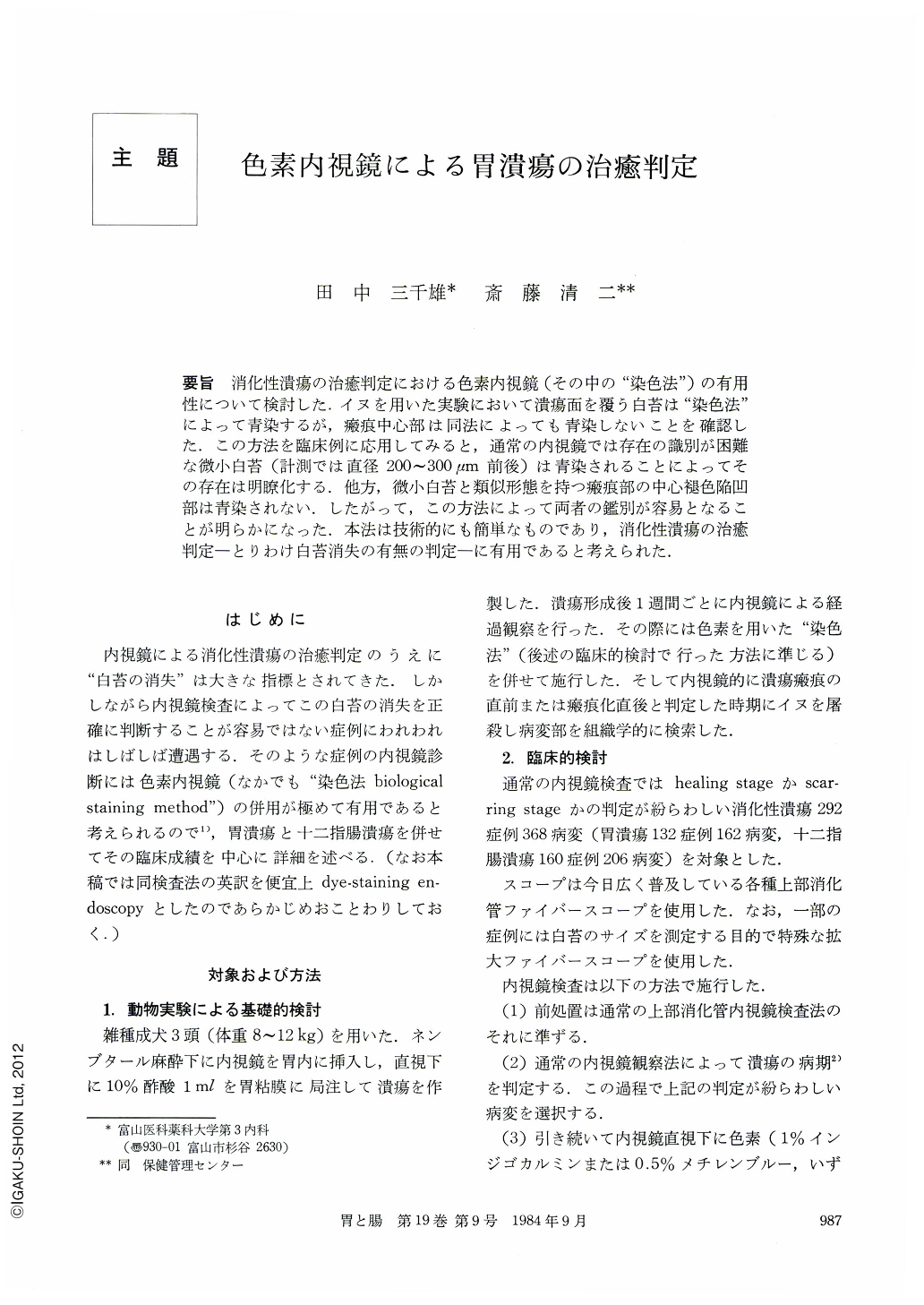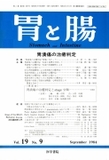Japanese
English
- 有料閲覧
- Abstract 文献概要
- 1ページ目 Look Inside
要旨 消化性潰瘍の治癒判定における色素内視鏡(その中の“染色法”)の有用性について検討した.イヌを用いた実験において潰瘍面を覆う白苔は“染色法”によって青染するが,瘢痕中心部は同法によっても青染しないことを確認した.この方法を臨床例に応用してみると,通常の内視鏡では存在の識別が困難な微小白苔(計測では直径200~300μm前後)は青染されることによってその存在は明瞭化する.他方,微小白苔と類似形態を持つ瘢痕部の中心褪色陥凹部は青染されない.したがって,この方法によって両者の鑑別が容易となることが明らかになった.本法は技術的にも簡単なものであり,消化性潰瘍の治癒判定一とりわけ白苔消失の有無の判定―に有用であると考えられた.
The conventional endoscopy does not necessarily contribute to the differentiation of a minute open ulcer with white coating (H2-stage of Sakita's classification) from a healed ulcer which has central discoloration with spotty or linear depression (S1,2-stage of Sakita's classification). Both experimental and clinical studies were performed for investigating usefulness of dyestaining endoscopy for such discrimination. Through mucosal injection of 10% acetic acid, three dogs started having gastric ulcer. Then dye-staining endoscopy and histological examination were carried out.
Endoscopy with and without the dye-staining method was also performed in 368 peptic ulcers of 292 patients (134 of gastric ulcer and 160 of duodenal ulcer) whose differential diagnosis for ulcer stage (H2-stage and S1,2-stage) through conventional endoscopic observation is found to be difficult.
The results were summarized as follows :
1. The experimental study with dogs revealed that the necrotic tissue of the ulcer which corresponds to the white coating of endoscopic view is stained blue (Fig. 1). On the contrary, the regenerated epithelium covering the healed ulcer floor is not stained at all by dye-staining endoscopy (Fig. 2, 3).
2. In the clinical study, detection or ruling out of existence of a minute white coating (0.5mmφ>) at peptic ulcer was made more easily and reliably by performing dye-staining endoscopy (Fig. 4~7). This dye-staining endoscopy revealed that 11~14 percent of 368 peptic ulcers were misdiagnosed by conventio-nal endoscopy in differentiating H2-stage ulcer from S1,2-stage ulcer (Table 1, 2).
In conclusion, dye-staining endoscopy was found very useful in endoscopic diagnosis of the peptic ulcer.

Copyright © 1984, Igaku-Shoin Ltd. All rights reserved.


